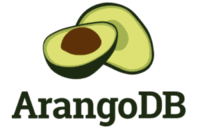ArangoDB vs Neo4j : Key Differences & Comparison

One of the industry trends in recent times has been accommodation for multiple data model types in one database system. That way, complex projects can mix and match based on their requirements for the best possible solution to realize the entire project. ArangoDB, to serve such use cases, supports multiple data model types in one engine: documents, key-value, and graphs. On the contrary, Neo4j’s posture is more focused in the industry as a native property graph database purpose-built for highly-connected data.
This article will go through ArangoDB and Neo4j across architecture, features, performance, and operational considerations. By the end, you will have a strong background to decide which aligns with your needs, and why an alternative like PuppyGraph makes more sense.
What is ArangoDB?

ArangoDB is a multi-model, distributed database designed to unify graph, document, and key-value data representations under a single query language and storage engine. It avoids maintaining separate systems for different workloads and allows you to model data flexibly and query it consistently across types.
Architecture Overview
ArangoDB uses a clustered architecture consisting of three primary components:
- Coordinators: Act as stateless routers that handle client queries and distribute them to the correct shards.
- DB-Servers: Host actual data shards and execute query fragments.
- Agents: Form a consensus layer based on the Raft protocol, responsible for cluster configuration and fault-tolerant metadata.
Each collection (similar to a table) can be sharded automatically across DBServers. Coordinators optimize query distribution and merge results to ensure scalability and high availability.
You can scale ArangoDB both horizontally and vertically. Horizontal scaling is easily achieved for document and key-value types. Graph traversals can also span multiple shards, though to achieve consistent performance at scale, it often requires careful data distribution across the shards in the cluster, or Enterprise features like SmartGraphs.
Data and Graph Model
ArangoDB supports multiple data models natively within a single database:
- Documents are stored in collections as JSON objects.
- Key-values are derived from documents by treating unique identifiers as lookup keys.
- Graphs consist of nodes and edges, both of which are documents in ArangoDB, and hence can be organized in sets using collections.
This design allows users to run both document queries and graph traversals against the same dataset. Developers can model data as interconnected documents and query across relationships without switching tools or data stores. While this flexibility isn’t unique in principle, ArangoDB’s single-query-language design makes it operationally consistent.
Query Language: AQL
ArangoDB Query Language (AQL) is a declarative language inspired by both SQL and functional programming paradigms. It supports joins, aggregations, and traversals in a unified syntax. For graph workloads, AQL provides traversal functions like GRAPH_TRAVERSAL() and pattern-based iteration over edges and vertices.
For example:
FOR v, e IN 1..3 OUTBOUND "users/alex" GRAPH "social"
RETURN v.nameThis query explores all nodes connected to Alex within three hops, following outbound edges.
AQL queries can mix models; you can combine document filters, key lookups, and graph traversals in one statement. However, this also means query optimization can become more complex for multi-model workloads; ArangoDB mitigates that through an evolving cost-based query optimizer.
Performance Posture
ArangoDB’s performance profile varies by workload:
- Document operations are efficient due to its columnar-style memory layout and RocksDB-based storage engine.
- Graph traversals perform best when data is colocated on the same shard or machine. For cross-shard traversals, the coordinator must route intermediate results, which adds network overhead.
AQL automatically distributes parts of a query plan across DB-Servers when possible.
This makes ArangoDB a strong choice in hybrid applications, like transactional plus analytical reads and document-centric graphs, but also less specialized for extreme graph workloads that demand deep traversal performance across distributed datasets.
Ecosystem and Tooling
- ArangoSearch, a built-in full-text and ranking engine integrated with AQL.
- Foxx Microservices, allowing custom JavaScript-based logic to run inside the database.
- Drivers for major languages like Python, Go, Node.js and Java.
- ArangoGraph, a managed service on major cloud platforms for simplified deployment and scaling.
The open-source edition covers most capabilities, while the enterprise edition adds features like smart graphs (optimized for sharded graph queries), advanced security controls, and extended replication topologies.
Operational Characteristics
ArangoDB provides ACID transactions for multi-document and multi-collection queries in a single-instance deployment, and local snapshot isolation. In a cluster environment, ArangoDB supports full ACID for single-document operations and non-sharded collections.
It supports asynchronous replication, configurable failover, and geo-distributed deployments with smart collections to minimize cross-region queries. Backup, monitoring, and cluster scaling are managed through built-in APIs or the ArangoGraph managed service.
Looking from an operational standpoint, ArangoDB’s strength lies in simplifying multi-model data management under one cluster. However, as we’ve discussed, achieving optimal graph performance at scale often requires careful data modeling and shard placement strategy.
What is Neo4j?

Neo4j is a native property graph database built specifically for managing and querying highly-connected data, its core design focusing on graph relationships as first-class citizens. Each node and relationship is stored directly with pointers, allowing the engine to traverse connections in constant time relative to the number of hops.
Architecture Overview
Neo4j implements a native graph storage engine and index-free adjacency model: relationships between nodes are stored as direct references on disk. As a result, it doesn’t require lookup joins during traversal.
A page cache keeps frequently accessed portions of the graph in memory while maintaining durability on disk. Thanks to this composite strategy, Neo4j can handle datasets far larger than available RAM while still providing predictable query latencies.
The Enterprise edition provides high availability and scalability. It supports Causal Clustering, a distributed architecture based on the Raft consensus algorithm. In a cluster:
- Primaries handle both reads and writes. Writes are synchronously replicated to a majority of primaries before being acknowledged.
- Secondaries replicate asynchronously and serve read queries at scale.
- A single leader per database orders writes, while followers maintain consistent logs for durability.
Neo4j’s Fabric extends these features to support federated queries across multiple databases, allowing large organizations to partition data by domain while still running global traversals or aggregations.
Data Model and Query Semantics
Neo4j models data using the property graph model:
- Nodes represent entities (a user, product, or transaction).
- Relationships connect nodes and have direction, type, and properties.
- Properties are key–value pairs attached to both nodes and relationships.
An ideal use case for this data model is workloads where relationships carry meaning, like fraud rings, identity graphs, or supply chain dependencies.
Neo4j also maintains ACID compliance at the transaction level, a critical requirement for consistency in write-heavy graph applications.
Query Language: Cypher
Neo4j introduced Cypher, a declarative query language for pattern-based graph traversal. It has since then been widely adopted as part of the openCypher standard and influencing the ISO GQL.
A simple Cypher query might look like this:
MATCH (u:User)-[:FOLLOWS]->(v:User)
WHERE u.name = "Alex"
RETURN v.nameIt fetches all users followed by Alex; notice how the query expresses the intent as an intuitive pattern rather than procedural logic.
Cypher has great readability, and its query planner optimizes pattern matching based on available indexes, relationship directions, and cardinality estimates. Neo4j also supports parameterized queries, subqueries, and procedures written in Java, supporting deep integration with application logic.
Performance Characteristics
- Constant-time relationship hops due to index-free adjacency.
- Optimized for multi-hop traversals and pattern-matching across dense graphs.
- Read scalability through read replicas (secondaries) that offload analytical or heavy read traffic.
- Write throughput limited by Raft quorum, safe but impacted by the synchronization of writes.
The Graph Data Science (GDS) library extends Neo4j for in-database analytics, providing algorithms like PageRank, Louvain, and graph embeddings to run close to the data. This avoids ETL overheads common in exporting graphs to external compute environments.
Operational Model
Neo4j offers several deployment modes:
- Standalone instance for development and smaller workloads.
- Clustered deployment (Enterprise Edition) for production-grade HA and scalability.
- Managed cloud through AuraDB, offering automated backups, scaling, and monitoring with enterprise SLAs.
The Causal Clustering model ensures durability and consistency. Writes require acknowledgment from a majority of primaries (2F + 1 primaries to tolerate F faults), while reads can be distributed across replicas. Failovers and leadership elections are handled automatically through Raft consensus.
Neo4j guarantees causal consistency across clients using bookmarks; client applications can read their own writes, irrespective of the instance they communicate with.
Ecosystem and Integrations
Over its decade-long evolution, Neo4j has built one of the most comprehensive ecosystems in the database space:
- APOC (Awesome Procedures on Cypher): A library of over 400 procedures for ETL, data transformation, and graph utilities.
- Graph Data Science (GDS): A production-ready library for algorithms and ML pipelines directly inside Neo4j.
- Neo4j Bloom and Browser: Visualization and ad-hoc exploration tools for both developers and analysts.
- Language drivers: Official support for Java, Python, Go, JavaScript, and .NET.
- Connectors: Integrations with Apache Kafka, Spark, BI tools (using JDBC/ODBC), and data pipelines.
Security and Reliability
While Neo4j Community supports only basic authentication, the Enterprise edition adds more, like role-based access control (RBAC). Both editions provide encrypted connections through TLS. The Enterprise Edition also adds auditing, multi-database support, and advanced backup mechanisms.
If we’re looking at industry use cases, Neo4j’s fault tolerance and security posture are designed for regulated industries like finance, healthcare, and telecom, since data lineage and high availability can be non-negotiable there.
ArangoDB vs Neo4j: Feature Comparison
The following table summarizes ArangoDB and Neo4j’s features across different dimensions:
When to Choose ArangoDB vs Neo4j
When to Choose ArangoDB
ArangoDB is a strong fit when your app blends documents for entities, key-values for caching or indexes, and graphs for relationships. You can keep everything in one system and avoid syncing across separate stores. Neo4j is purpose-built for graphs, so teams often add a document store or cache alongside it, which adds pipelines and cross-system coordination that ArangoDB avoids.
For workloads where most traversals are shallow to moderate and you need to mix graph hops with document filters, joins, and aggregations, ArangoDB handles it cleanly in one AQL plan. Neo4j excels at deep, graph-heavy traversals and pattern matching, but it lacks native document and key-value models. If your queries regularly combine rich document criteria with graph logic, ArangoDB keeps it in one place, while Neo4j typically pushes non-graph work to another system. Keep in mind that very deep, cross-shard traversals are harder for ArangoDB, so it is best when relationship depth is moderate and data locality can be managed.
Operations stay simpler with ArangoDB because documents, key-values, and graphs share one storage and deployment model. The ArangoGraph managed service adds automated provisioning, monitoring, and scaling that helps teams without dedicated SRE support. Neo4j’s managed offering streamlines graph operations, but if you still need a separate document layer or cache you are back to operating more than one service. For smaller or hybrid teams, ArangoDB’s one-platform approach often wins on day-to-day simplicity.
When to Choose Neo4j
Neo4j is relationship-first. Its native pointers (index-free adjacency) and Cypher optimizer are tuned for fast, predictable multi-hop pattern matching at scale. ArangoDB can traverse graphs and does well on hybrid queries, but Neo4j tends to hold lower latency and steadier throughput when the workload is dominated by deep, dense traversals under load.
Neo4j’s Graph Data Science is broader and more production-ready end to end. You get a large catalog of algorithms, embeddings, pipelines, and model ops that run close to the graph with minimal plumbing. ArangoDB offers Pregel-based algorithms and AQL pathfinding, but teams doing advanced graph ML, similarity search, or large-scale feature engineering usually move faster with Neo4j’s integrated GDS stack.
Neo4j’s edge in enterprise governance shows when you need to run many graphs across teams with clear policy and steady operations. Neo4j’s Fabric federates multiple databases into one logical estate so you set policy once and run cross-graph queries with consistent enforcement. Ops Manager supports fleet-level monitoring and controlled rollouts, Aura adds uptime SLAs and managed failover, and Bloom gives permission-aware exploration to non-engineers. ArangoDB covers the basics, but it lacks a Fabric-style federation model and the same breadth of operational tooling for large, multi-graph deployments.
Which One is Right for You?
Graph is a Feature
For many applications, the graph component exists alongside other data models, as part of the product, instead of being the core of it. ArangoDB can be a strong fit for those cases: you can model entities as documents, perform key-value lookups for fast access, and still express relationships through edges without moving to a separate data stack.
ArangoDB’s value here is the unification. You spend less time integrating systems and more time building your product and business logic. The only trade-off is that graph depth and analytical sophistication are limited by the same abstraction that gives you flexibility.
Graph Is the System
When relationships define your domain, when every entity is meaningful primarily through its connections, Neo4j becomes the more natural choice. The index-free adjacency model and graph-native storage make it exceptionally efficient for deep traversals, pattern matching, and recursive graph algorithms.
Use Neo4j when your workloads depend on real-time inference across many hops or complex topological queries that other databases don’t deliver competitively.
Keep in mind that Neo4j’s specialization comes with architectural implications in that it’s not multi-model. So document-like entities or tabular exports often live elsewhere, connected through ETL or integration pipelines. Consequently, you will face operational overhead and more system complexity over time.
Why Consider PuppyGraph as an Alternative
Data architectures evolve even with the perfect graph database in production. Graphs that begin as a feature often grow into core business drivers, and vice versa. Thinking long term, your architecture should adapt when data models or workloads alter.
ArangoDB unifies multiple data types but remains bound by its underlying storage semantics, with performance degredation on more complex queries. Neo4j delivers fast traversals but confines relationships within its own ecosystem. As organizations grow, these boundaries can create integration friction and force tradeoffs between graph power and architectural flexibility.
That’s why many are now looking beyond traditional databases toward graph platforms that integrate across systems instead of replacing them: platforms like PuppyGraph.
PuppyGraph takes a different path: it queries your existing relational databases and data lakes directly, with no ETL and no duplication.


This zero-ETL approach avoids one of the biggest pain points in graph adoption. You can create graph schemas over current tables, run queries in openCypher or Gremlin, and visualize results in minutes without moving data. The same dataset can be explored in both SQL and graph form, so teams don’t need to maintain parallel stacks.
PuppyGraph also supports defining multiple graph views over the same data through simple JSON schemas. That makes it easy to view the same relational tables from different angles, all without restructuring or duplicating data.
Because compute and storage are separated, PuppyGraph scales to petabyte-level datasets and handles multi-hop queries efficiently. Complex queries that would normally require sharding or heavy caching can be executed in seconds. Costs are also significantly reduced with PuppyGraph, since you only pay for compute when you query rather than for a standing graph cluster and a second storage tier.
PuppyGraph’s graph analytics engine bridges graph intelligence with existing data infrastructure without forcing a single-model commitment.
Conclusion
The right choice between ArangoDB and Neo4j depends on whether your graph is part of your data model or defines it. But data ecosystems are growing more interconnected; you will want to avoid maintaining separate engines for graphs, documents, and analytics.
PuppyGraph brings graph computation to where your data already lives. It doesn’t compromise your existing data stack and promises industry-proven performance and flexibility. For enterprises designing data systems that evolve faster than their storage layers, it’s a forward-looking foundation that future-proofs your business goals.
To get started, grab the PuppyGraph's forever free Developer edition, or book a free demo to talk with our graph experts.
Get started with PuppyGraph!
Developer Edition
- Forever free
- Single noded
- Designed for proving your ideas
- Available via Docker install
Enterprise Edition
- 30-day free trial with full features
- Everything in developer edition & enterprise features
- Designed for production
- Available via AWS AMI & Docker install






